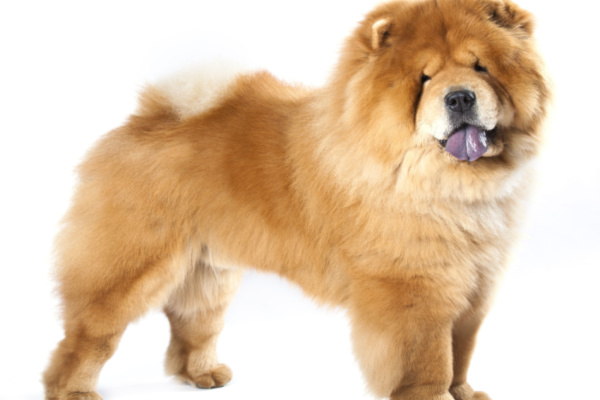Black spots on a dog’s tongue are created by pigmentation and, they’re generally determined by melanin genetics. They’re not always present at birth but can develop during the first several months of life. Your young puppy may start out with a completely pink tongue, but spots or color changes may appear as they grow.
According to Daily Paws, the black spot pigmentation is produced by a substance called melanin, which is also responsible for hair and skin color. Melanin-producing cells called melanocytes develop during gestation and disperse throughout the embryo, creating random patterns or spots of color on the skin, including the tongue. These areas may appear black, brown, gray, or blue in color. Pigmented spots on the tongue are similar to birthmarks, freckles, and moles that occur outside of the mouth, on the skin, which can also translate to the dog’s coat, or “markings.”
So what causes some dogs to have colored or spotted tongues and not others? Casey Carl, DVM, a member of the Veterinary Geneticist Service Team at Embark, offers some insight. “Genetic factors play an important role in dog breeds that develop an inherited blue-black pigmented tongue (typically in the first 6 months of life),” Carl says. “At Embark, a region containing several genes has been associated with spotted and fully pigmented tongues in chows and some related breeds, but no specific genes or genetic variants have been determined to fully explain these traits.”
As for why some dogs have fully pigmented tongues and others simply have spots, it’s also probably related to genetics. “There is evidence to suggest that specific combinations of multiple genetic variants may explain differences between pink (unpigmented), spotted, and fully pigmented tongues. There may also be independent genes that are associated with spotted tongues,” Carl says.
Blue-black tongues are a common trait among certain dog breeds, such as the chow chow and shar-pei. It’s possible that the black spots on your dog come from their genetic background. “Blue-black tongue pigmentation is considered an AKC breed standard trait in some breeds, such as the chow chow and shar pei,” Carl says. “As these breeds were being created, founder dogs with naturally occurring black tongues were likely selectively bred for this trait. Over time and many generations, this practice can eventually ‘fix’ a trait in a breed resulting in all (or nearly all) members of the breed reliably developing that trait.”
There are various theories about why these breeds developed black tongues, such as providing camouflage or protecting against sunburn, but there is no conclusive evidence to support these theories. So, if your dog has black spots on their tongue—or a fully blue or black tongue—it could have little to do with breed and may simply be caused by the random distribution of melanin. But if you’re curious about your dog’s ancestry, DNA testing can help you gain some insight.
Fortunately, the natural development of black spots on a dog’s tongue is not harmful to the dog and does not affect their health or behavior, and black spots on the tongue that have been present since puppyhood are considered normal. These areas should be smooth and not bother the dog. However, any changes in size, shape, or texture should be taken seriously. These changes could be caused by a nutritional deficiency, a metabolic disease, or even cancer.
Melanoma is one of the more common types of oral tumors found in dogs. This type of cancer affects the melanocytes and can cause one or more tumors to develop in the mouth. Melanoma can also affect the paws and skin.
Contact your veterinarian if you notice a new spot on your dog’s tongue, especially if the area is raised or swollen, your dog is having trouble eating or chewing, or you notice excessive drooling. If your dog is having difficulty breathing or is unresponsive, go to the nearest open vet office immediately.
—
Photo Credit: Liliya Kulianionak / Shutterstock.com
